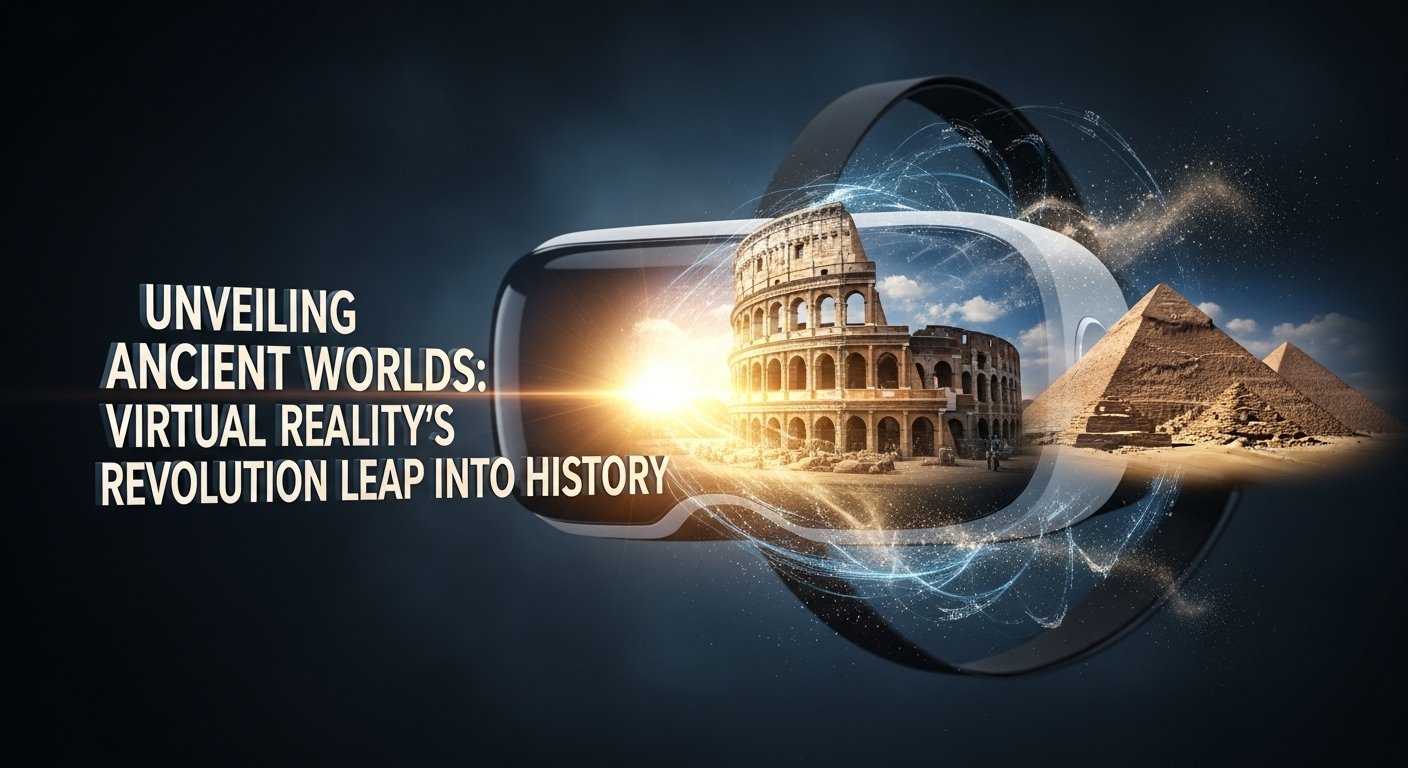Unveiling Ancient Worlds: Virtual Reality’s Revolutionary Leap into History
Have you ever gazed at a dusty museum exhibit, a faded photograph of a ruin, or a meticulously drawn map of an ancient city and wished you could just… step inside? To feel the sun on your face as you walk the streets of Pompeii, to witness the bustling marketplace of ancient Rome, or to decipher hieroglyphs alongside an Egyptian scribe? For generations of history buffs and curious minds alike, this was merely a daydream. But thanks to the incredible advancements in virtual reality, that dream is now a vibrant, interactive reality.
Imagine not just learning about history, but experiencing it. Virtual reality isn’t just a fancy gadget; it’s a time machine, meticulously crafted by historians, archaeologists, and technologists to transport you directly into the heart of ancient civilizations. This isn’t just about passive viewing; it’s about active exploration, discovery, and a profound connection to the past that textbooks simply can’t offer. For US students and history enthusiasts, virtual reality offers an unparalleled opportunity to uncover ancient secrets, fascinating facts, and invaluable history lessons.
4 Characteristics of Warm Demander Teachers | Balancing Care & High Expectations
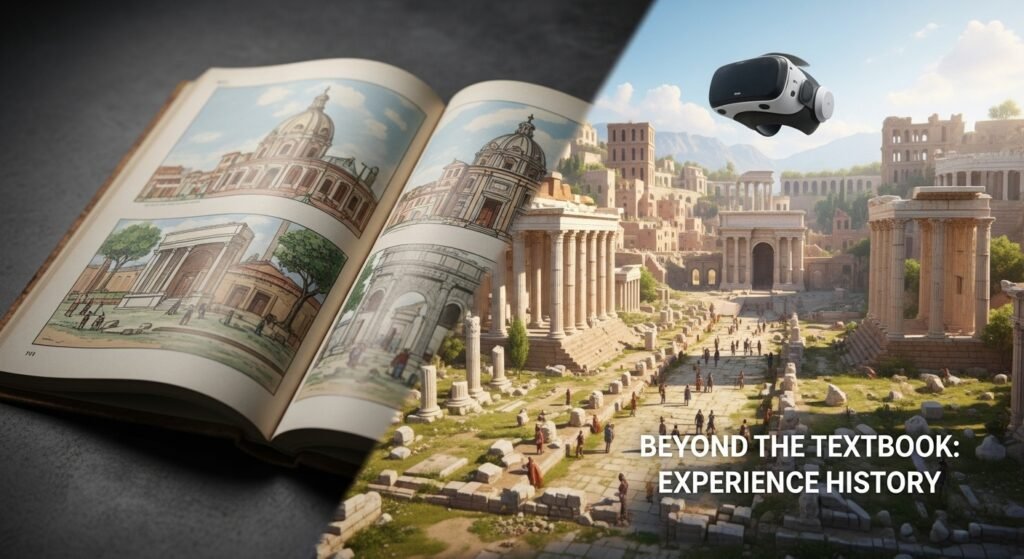
Beyond the Textbook: Why Virtual Reality is a Game-Changer for History
For centuries, our understanding of ancient civilizations has been pieced together from fragmented artifacts, crumbling ruins, and the often-biased accounts of ancient texts. While invaluable, these sources inherently create a distance between us and the past. Virtual reality shatters that barrier, offering an immersive, multi-sensory experience that fundamentally changes how we interact with historical data.
Consider the traditional learning experience: lectures, textbooks, and perhaps a documentary. While effective in conveying information, they often lack the emotional resonance and spatial understanding that comes from direct experience. With virtual reality, you’re not just reading about the Roman Forum; you’re standing in it, feeling its scale, observing the architectural details, and even hearing the ambient sounds of what it might have been like. This level of engagement is not just fascinating; it’s deeply impactful for learning and retention.
4 Characteristics of Warm Demander Teachers | Balancing Care & High Expectations
The Power of Presence: What VR Brings to Ancient History
The magic of virtual reality lies in its ability to create a sense of “presence.” When you put on a VR headset, your brain is largely tricked into believing you are actually there. This psychological phenomenon has profound implications for understanding historical contexts:
- Spatial Awareness: Understanding the layout of an ancient city, the size of a temple, or the distance between key landmarks becomes intuitive when you can physically navigate them. This is something flat maps and diagrams simply cannot replicate.
- Sensory Immersion: While current VR can’t replicate smell or touch perfectly, the visual and auditory cues are incredibly powerful. Imagine hearing the chatter of a marketplace in ancient Babylon or the echoing chants within an Egyptian temple. This adds layers of authenticity.
- Empathy and Perspective: Stepping into the shoes of someone from an ancient civilization, even virtually, can foster a deeper sense of empathy. You begin to grasp the challenges, triumphs, and daily lives of people who lived thousands of years ago. This human connection is crucial for history education.
From Dusty Tombs to Digital Marvels: The Evolution of Historical Exploration
Historically, if you wanted to explore an ancient site, you had to travel there. This is costly, time-consuming, and often impossible for many. Even then, many sites are heavily restricted to preserve them, limiting access. Virtual reality bypasses these limitations entirely.
| Traditional Exploration | Virtual Reality Exploration |
| Physical Travel: Required to visit sites. | Instant Access: Explore from anywhere in the world. |
| Limited Access: Many areas restricted for preservation. | Full Access: Explore every nook and cranny. |
| Static View: See ruins as they are today. | Dynamic View: See reconstructions as they were. |
| Passive Learning: Reading signs, listening to guides. | Interactive Learning: Manipulate objects, solve puzzles. |
| Costly & Time-Consuming: Significant investment. | Accessible & Efficient: Often more affordable and immediate. |
Export to Sheets
This table clearly illustrates the paradigm shift that virtual reality is bringing to the study and appreciation of ancient civilizations. It’s not about replacing physical visits, but augmenting and democratizing access to historical knowledge in an unprecedented way.
Fascinating Facts & Unique Insights from VR Journeys
Let’s dive into some specific examples of how virtual reality is revealing new dimensions of ancient civilizations, offering insights that were previously difficult to grasp.
Rome Reborn: Walking the Imperial City
One of the most ambitious and well-known virtual reality projects is Rome Reborn. This initiative has meticulously reconstructed the city of ancient Rome as it appeared in 320 AD, complete with thousands of buildings, intricate details, and a staggering sense of scale.
When you enter Rome Reborn through a virtual reality headset, you immediately understand the sheer architectural prowess of the Roman Empire. Standing in the Colosseum, you can truly appreciate its gladiatorial past. Walking through the Roman Forum, you see not just broken columns, but fully rendered temples, basilicas, and government buildings.
Unique Insights from Rome Reborn:
- The Vertical City: Often, we visualize ancient Rome as sprawling horizontally. In VR, you realize how densely packed and multi-storied many areas were, giving a better sense of urban life.
- Colossal Scale: The sheer size of structures like the Baths of Caracalla or the Circus Maximus becomes breathtakingly clear. A textbook diagram cannot convey the vastness as effectively as standing within a virtual reality reconstruction.
- Everyday Life: While focused on major monuments, the project also allows glimpses into street-level life, giving US students a tangible connection to the daily hustle and bustle of ancient Romans.
4 Characteristics of Warm Demander Teachers | Balancing Care & High Expectations
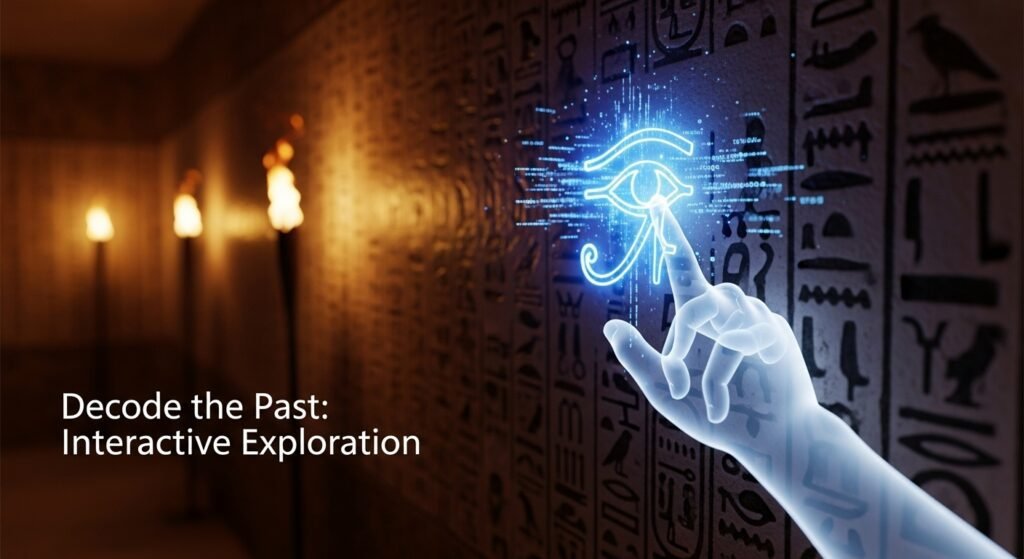
Unveiling Ancient Egypt: Tombs, Temples, and Hieroglyphs
Ancient Egypt has always held a particular mystique. Virtual reality is now allowing us to explore its treasures without damaging fragile sites or even leaving our homes. Projects like the ScanPyramids mission have used advanced scanning techniques, which can then be rendered in VR, to explore hidden chambers within the Great Pyramid.
Imagine:
- Exploring a Pharaoh’s Tomb: Descending into a meticulously recreated tomb, observing the vibrant wall paintings as they would have looked thousands of years ago, before the colors faded. You can zoom in on individual hieroglyphs, learning their meaning in context.
- Navigating Karnak Temple: The sprawling complex of Karnak is awe-inspiring in person, but in virtual reality, you can fly over it, walk through its various halls, and gain a holistic understanding of its religious and architectural significance.
Fresh Perspectives on Egypt:
- The Scale of Sacred Spaces: The sheer volume of labor and precision required to build structures like the Pyramids and massive temples becomes profoundly apparent in VR. This isn’t just about blocks; it’s about an entire civilization’s dedication.
- Hieroglyphic Storytelling: Interacting with hieroglyphs in a 3D environment, perhaps with pop-up translations or animated explanations, transforms them from cryptic symbols into vivid narratives of gods, pharaohs, and daily life. This is a powerful educational application for virtual reality.
Maya Mysteries: Beyond the Jungle Canopy
The ancient Maya civilization, with its sophisticated calendar, intricate writing system, and monumental architecture hidden within dense Central American jungles, is another prime candidate for virtual reality exploration. Projects are underway to digitize sites like Tikal and Chichen Itza.
Through virtual reality, you can:
- Ascend Maya Pyramids: Experience the dizzying heights and steep steps of structures like Temple I at Tikal, gaining a new appreciation for the spiritual and astronomical significance of these buildings.
- Decipher Maya Glyphs: Some VR experiences are incorporating interactive elements that allow users to click on Maya glyphs, revealing information about their meaning and the stories they tell.
Unique Maya Insights:
- Jungle Integration: Virtual reality can better convey how Maya cities were intertwined with their natural environment, showing how the jungle was cleared and managed to support vast urban centers.
- Astronomical Alignment: The precise alignment of Maya structures with celestial events is much easier to grasp when you can simulate the sun’s path or the positions of stars from within the virtual environment. This hands-on understanding is vital for history buffs interested in ancient science.
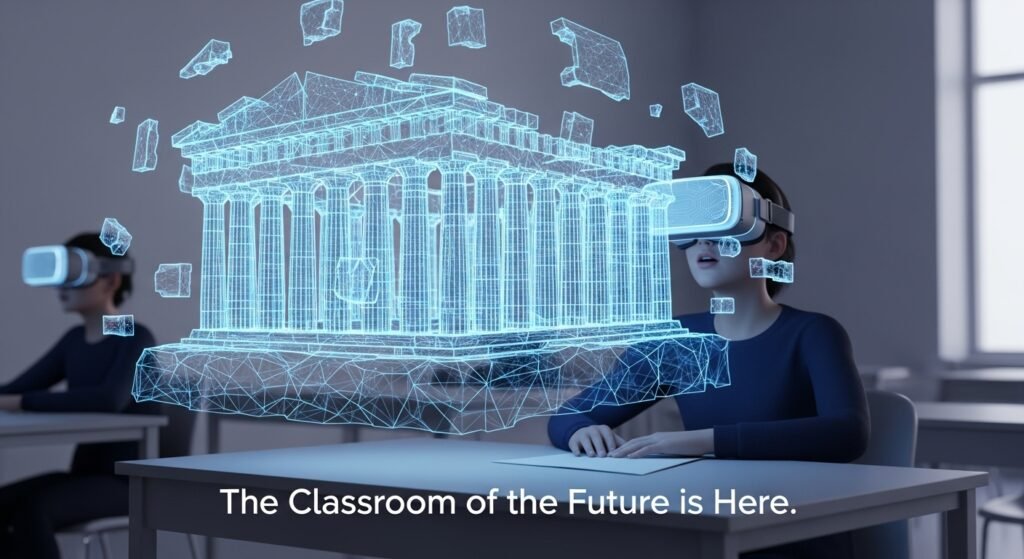
The Future is Now: Personal Experiences and Engaging Students
My own experience with virtual reality exploration has been nothing short of transformative. I vividly recall my first walk through a reconstructed Roman villa. The intricate mosaics on the floor, the murals on the walls, and the sense of space made the past feel incredibly tangible. It wasn’t just information; it was an experience that evoked genuine awe and curiosity. This is the power of virtual reality.
For educators, especially those in the US, virtual reality offers an exciting new frontier. Imagine a history class where students don’t just read about the Parthenon, but virtually walk around it, examining its architectural nuances. This shift from passive reception to active engagement can ignite a passion for history that traditional methods sometimes struggle to achieve.
Practical Applications for Education:
- Virtual Field Trips: Schools can take students on virtual field trips to distant historical sites, overcoming geographical and financial barriers. This democratizes access to unparalleled learning experiences.
- Interactive Learning Modules: VR can be used to create modules where students solve historical puzzles, reconstruct ancient artifacts, or even participate in simulated historical events. The potential for project-based learning through virtual reality is immense.
- Accessibility for All: Students with physical limitations who might not be able to visit actual historical sites can experience them fully through virtual reality.
3 Fun Ways to Build a Science Classroom Community
Challenges and the Road Ahead for Virtual Reality in History
While the potential of virtual reality is immense, there are still challenges to address:
- Cost of Hardware: High-quality VR headsets can still be expensive, though prices are decreasing.
- Content Development: Creating accurate and engaging historical VR experiences requires significant investment from historians, archaeologists, and developers.
- Historical Accuracy: Ensuring that reconstructions are as accurate as possible is paramount. This requires meticulous research and careful interpretation of archaeological evidence. Debates about “how things really looked” are ongoing and important.
- Motion Sickness: Some users experience motion sickness in VR, though this is becoming less common with advancements in technology.
Despite these challenges, the trajectory for virtual reality in historical exploration is overwhelmingly positive. As technology becomes more accessible and content libraries grow, we can expect even more incredible journeys into the past.
Beyond Just Seeing: Interacting with the Past
The next evolution of virtual reality in history isn’t just about seeing; it’s about interacting. Imagine:
- Picking up and examining an ancient tool: Understanding its weight, its balance, and how it might have been used.
- “Talking” to historical figures: AI-powered avatars based on historical records could provide simulated conversations, offering insights into their lives and perspectives.
- Reconstructing a shattered pottery piece: Learning archaeological methods by virtually assembling fragments.
These interactive elements elevate virtual reality from a viewing platform to a dynamic learning environment, further solidifying its role as a revolutionary tool for history buffs and students alike. The possibilities for engaging learning through virtual reality are truly endless.
3 Fun Ways to Build a Science Classroom Community
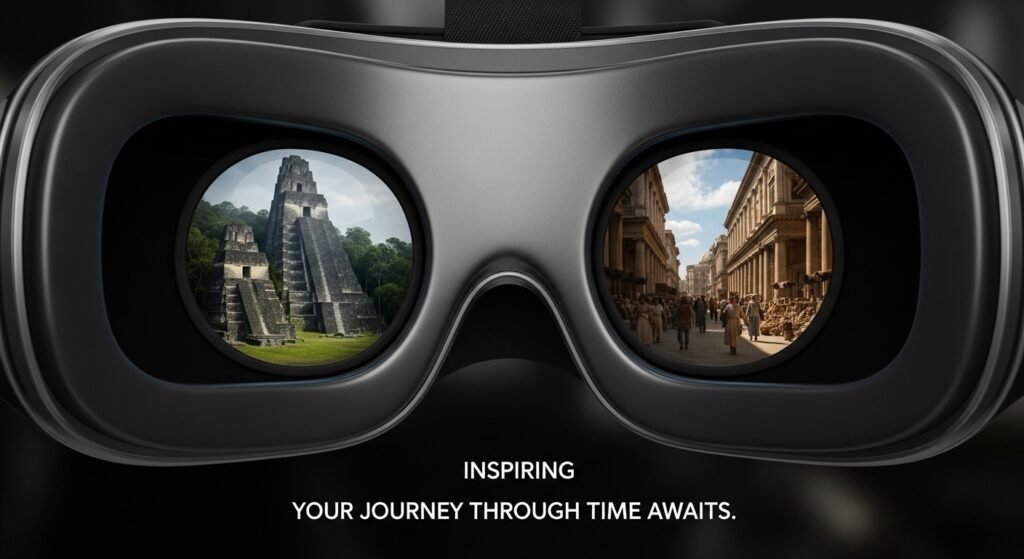
Conclusion: Step into History with Virtual Reality
The dusty pages of history books are coming alive, not just in our imaginations, but in immersive, breathtaking detail, thanks to virtual reality. This revolutionary technology is not merely a novelty; it’s a powerful educational tool that offers unparalleled access to ancient civilizations, providing unique insights, fostering deeper understanding, and igniting a lifelong passion for the past. For anyone who has ever dreamed of walking among the pharaohs, debating in the Roman Forum, or witnessing the grandeur of Maya cities, virtual reality makes that dream a thrilling reality.
Are you ready to transcend time and explore the wonders of ancient civilizations from a completely new perspective? Don’t just read history; live it. Dive into the world of virtual reality and unlock the secrets that have been hidden for millennia.
What ancient civilization would you most like to explore through virtual reality? Share your thoughts and dream destinations in the comments below! 3 Fun Ways to Build a Science Classroom Community

